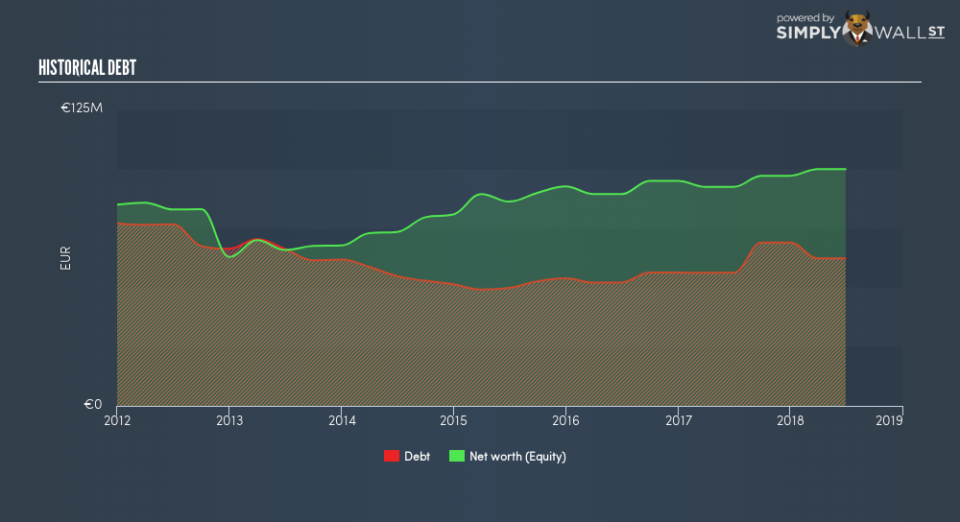BasicNet SpA (BIT:BAN): Time For A Financial Health Check

BasicNet SpA (BIT:BAN) is a small-cap stock with a market capitalization of €245m. While investors primarily focus on the growth potential and competitive landscape of the small-cap companies, they end up ignoring a key aspect, which could be the biggest threat to its existence: its financial health. Why is it important? Companies operating in the Specialty Retail industry facing headwinds from current disruption, even ones that are profitable, are more likely to be higher risk. So, understanding the company’s financial health becomes crucial. Here are a few basic checks that are good enough to have a broad overview of the company’s financial strength. Though, this commentary is still very high-level, so I’d encourage you to dig deeper yourself into BAN here.
Does BAN produce enough cash relative to debt?
BAN has built up its total debt levels in the last twelve months, from €56m to €62m , which includes long-term debt. With this rise in debt, BAN currently has €4.3m remaining in cash and short-term investments for investing into the business. Additionally, BAN has produced €17m in operating cash flow in the last twelve months, resulting in an operating cash to total debt ratio of 27%, signalling that BAN’s operating cash is sufficient to cover its debt. This ratio can also be a sign of operational efficiency as an alternative to return on assets. In BAN’s case, it is able to generate 0.27x cash from its debt capital.
Can BAN pay its short-term liabilities?
Looking at BAN’s €91m in current liabilities, it appears that the company has maintained a safe level of current assets to meet its obligations, with the current ratio last standing at 1.42x. For Specialty Retail companies, this ratio is within a sensible range as there’s enough of a cash buffer without holding too much capital in low return investments.
Does BAN face the risk of succumbing to its debt-load?
With a debt-to-equity ratio of 62%, BAN can be considered as an above-average leveraged company. This is not uncommon for a small-cap company given that debt tends to be lower-cost and at times, more accessible. We can test if BAN’s debt levels are sustainable by measuring interest payments against earnings of a company. Ideally, earnings before interest and tax (EBIT) should cover net interest by at least three times. For BAN, the ratio of 18.82x suggests that interest is comfortably covered, which means that lenders may be inclined to lend more money to the company, as it is seen as safe in terms of payback.
Next Steps:
Although BAN’s debt level is towards the higher end of the spectrum, its cash flow coverage seems adequate to meet obligations which means its debt is being efficiently utilised. This may mean this is an optimal capital structure for the business, given that it is also meeting its short-term commitment. This is only a rough assessment of financial health, and I’m sure BAN has company-specific issues impacting its capital structure decisions. I recommend you continue to research BasicNet to get a more holistic view of the small-cap by looking at:
Historical Performance: What has BAN’s returns been like over the past? Go into more detail in the past track record analysis and take a look at the free visual representations of our analysis for more clarity.
Other High-Performing Stocks: Are there other stocks that provide better prospects with proven track records? Explore our free list of these great stocks here.
To help readers see past the short term volatility of the financial market, we aim to bring you a long-term focused research analysis purely driven by fundamental data. Note that our analysis does not factor in the latest price-sensitive company announcements.
The author is an independent contributor and at the time of publication had no position in the stocks mentioned. For errors that warrant correction please contact the editor at editorial-team@simplywallst.com.

